Zhifeng Tang
Coverage Analysis for 3D Indoor Terahertz Communication System Over Fluctuating Two-Ray Fading Channels
Oct 07, 2024



Abstract:In this paper, we develop a novel analytical framework for a three-dimensional (3D) indoor terahertz (THz) communication system. Our proposed model incorporates more accurate modeling of wall blockages via Manhattan line processes and precise modeling of THz fading channels via a fluctuating two-ray (FTR) channel model. We also account for traditional unique features of THz, such as molecular absorption loss, user blockages, and 3D directional antenna beams. Moreover, we model locations of access points (APs) using a Poisson point process and adopt the nearest line-of-sight AP association strategy. Due to the high penetration loss caused by wall blockages, we consider that a user equipment (UE) and its associated AP and interfering APs are all in the same rectangular area, i.e., a room. Based on the proposed rectangular area model, we evaluate the impact of the UE's location on the distance to its associated AP. We then develop a tractable method to derive a new expression for the coverage probability by examining the interference from interfering APs and considering the FTR fading experienced by THz communications. Aided by simulation results, we validate our analysis and demonstrate that the UE's location has a pronounced impact on its coverage probability. Additionally, we find that the optimal AP density is determined by both the UE's location and the room size, which provides valuable insights for meeting the coverage requirements of future THz communication system deployment.
Age of Information in Downlink Systems: Broadcast or Distributed Transmission?
Oct 28, 2022Abstract:We analytically decide whether the broadcast transmission scheme or the distributed transmission scheme achieves the optimal age of information (AoI) performance of a multiuser system where a base station (BS) generates and transmits status updates to multiple user equipments (UEs). In the broadcast transmission scheme, the status update for all UEs is jointly encoded into a packet for transmission, while in the distributed transmission scheme, the status update for each UE is encoded individually and transmitted by following the round robin policy. For both transmission schemes, we examine three packet management strategies, namely the non-preemption strategy, the preemption in buffer strategy, and the preemption in serving strategy. We first derive new closed-form expressions for the average AoI achieved by two transmission schemes with three packet management strategies. Based on them, we compare the AoI performance of two transmission schemes in two systems, namely, the remote control system and the dynamic system. Aided by simulation results, we verify our analysis and investigate the impact of system parameters on the average AoI. For example, the distributed transmission scheme is more appropriate for the system with a large number UEs. Otherwise, the broadcast transmission scheme is more appropriate.
Average Age of Information Penalty of Short-Packet Communications with Packet Management
Oct 26, 2022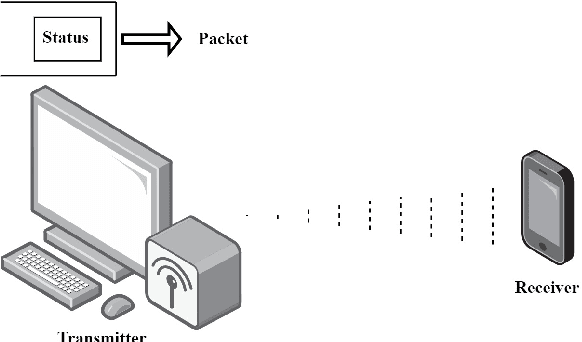

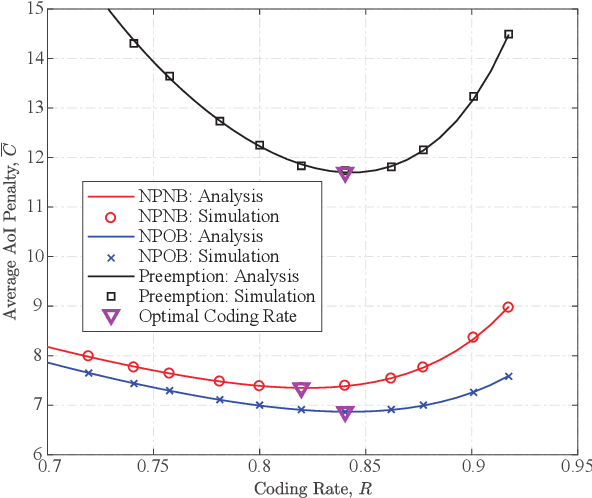
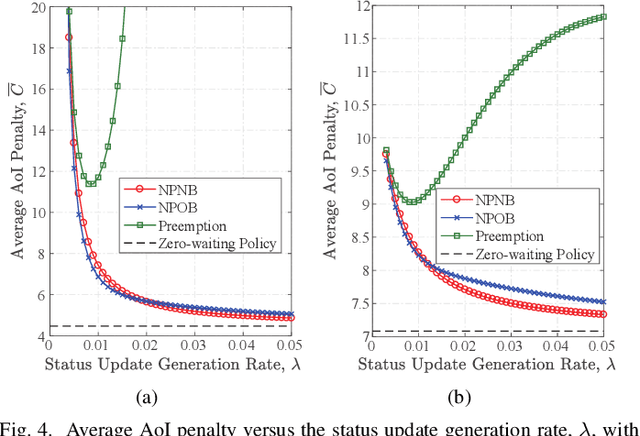
Abstract:In this paper, we analyze the non-linear age of information (AoI) performance in a point-to-point short packet communication system, where a transmitter generates packets based on status updates and transmits the packets to a receiver. Specifically, we investigate three packet management strategies, namely, the non-preemption with no buffer strategy, the non-preemption with one buffer strategy, and the preemption strategy. To characterize the level of the receiver's dissatisfaction on outdated data, we adopt a generalized \alpha-\beta AoI penalty function into the analysis and derive closed-form expressions for the average AoI penalty achieved by the three packet management strategies. Simulation results are used to corroborate our analysis and explicitly evaluate the impact of various system parameters, such as the coding rate and status update generation rate, on the AoI performance. Additionally, we find that the value of \alpha reflects the system transmission reliability.
The Age of Information of Short-Packet Communications: Joint or Distributed Encoding?
Nov 04, 2021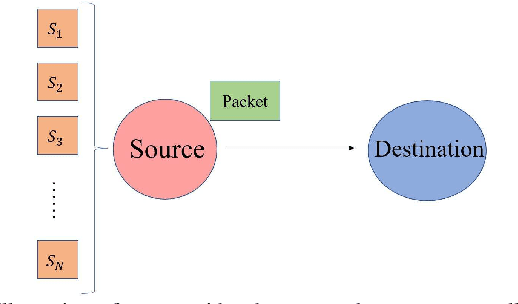
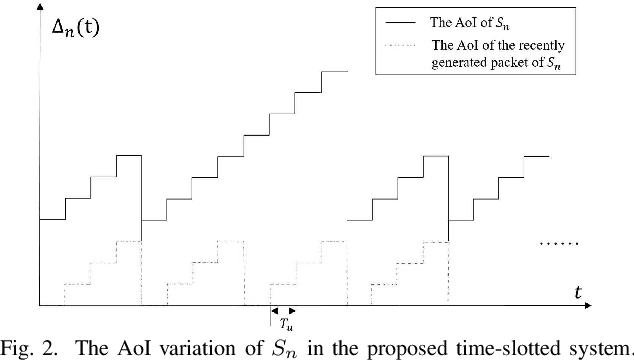
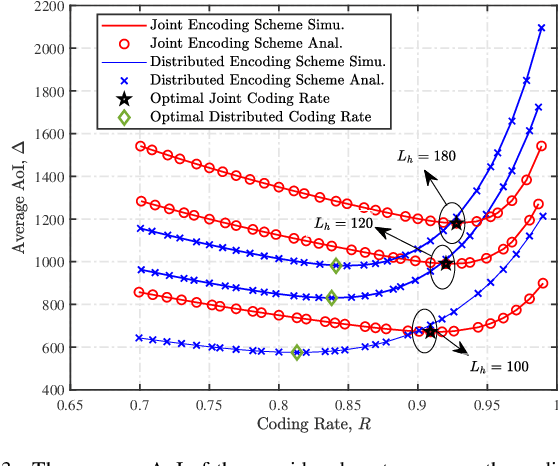
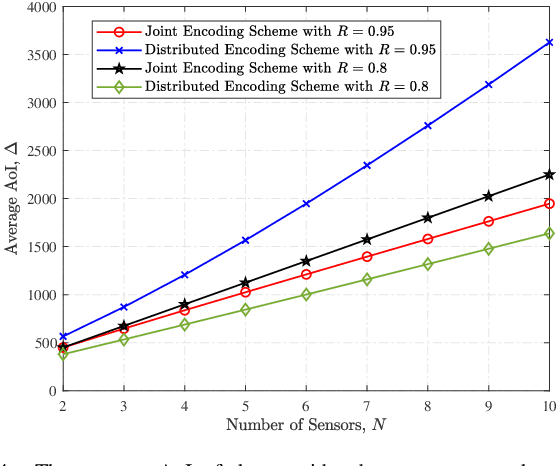
Abstract:In this paper, we analyze the impact of different encoding schemes on the age of information (AoI) performance in a point-to-point system, where a source generates packets based on the status updates collected from multiple sensors and transmits the packets to a destination. In this system, we consider two encoding schemes, namely, the joint encoding scheme and the distributed encoding scheme. In the joint encoding scheme, the status updates from all the sensors are jointly encoded into a packet for transmission. In the distributed encoding scheme, the status update from each sensor is encoded individually and the sensors' packets are transmitted following the round robin policy. To ensure the freshness of packets, the zero-wait policy is adopted in both schemes, where a new packet is immediately generated once the source finishes the transmission of the current packet. We derive closed-form expressions for the average AoI achieved by these two encoding schemes and compare their performances. Simulation results show that the distributed encoding scheme is more appropriate for systems with a relatively large number of sensors, compared with the joint encoding scheme.
Whittle Index Based Scheduling Policy for Minimizing the Cost of Age of Information
Sep 13, 2021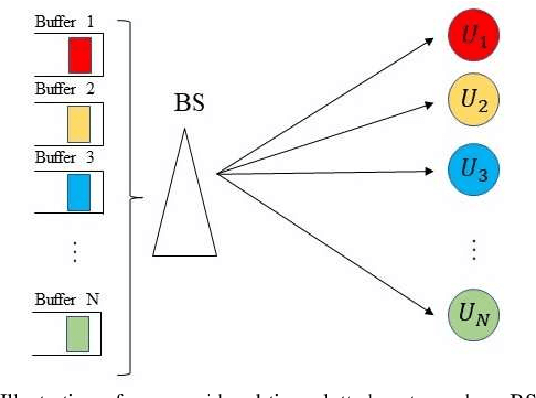
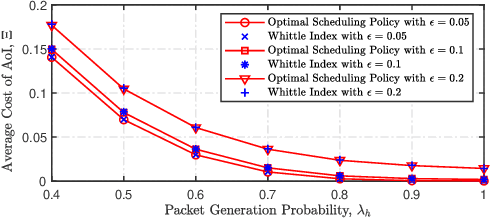
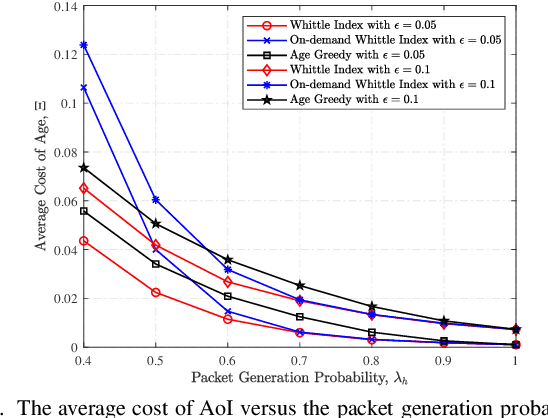
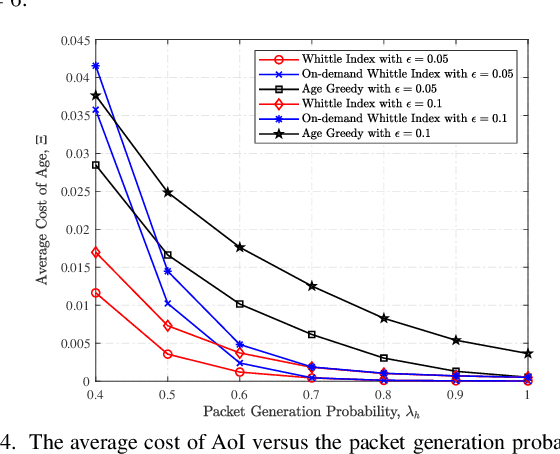
Abstract:We design a new scheduling policy to minimize the general non-decreasing cost function of age of information (AoI) in a multiuser system. In this system, the base station stochastically generates time-sensitive packets and transmits them to corresponding user equipments via an unreliable channel. We first formulate the transmission scheduling problem as an average cost constrained Markov decision process problem. Through introducing the service charge, we derive the closed-form expression for the Whittle index, based on which we design the scheduling policy. Using numerical results, we demonstrate the performance gain of our designed scheduling policy compared to the existing policies, such as the optimal policy, the on-demand Whittle index policy, and the age greedy policy.
 Add to Chrome
Add to Chrome Add to Firefox
Add to Firefox Add to Edge
Add to Edge